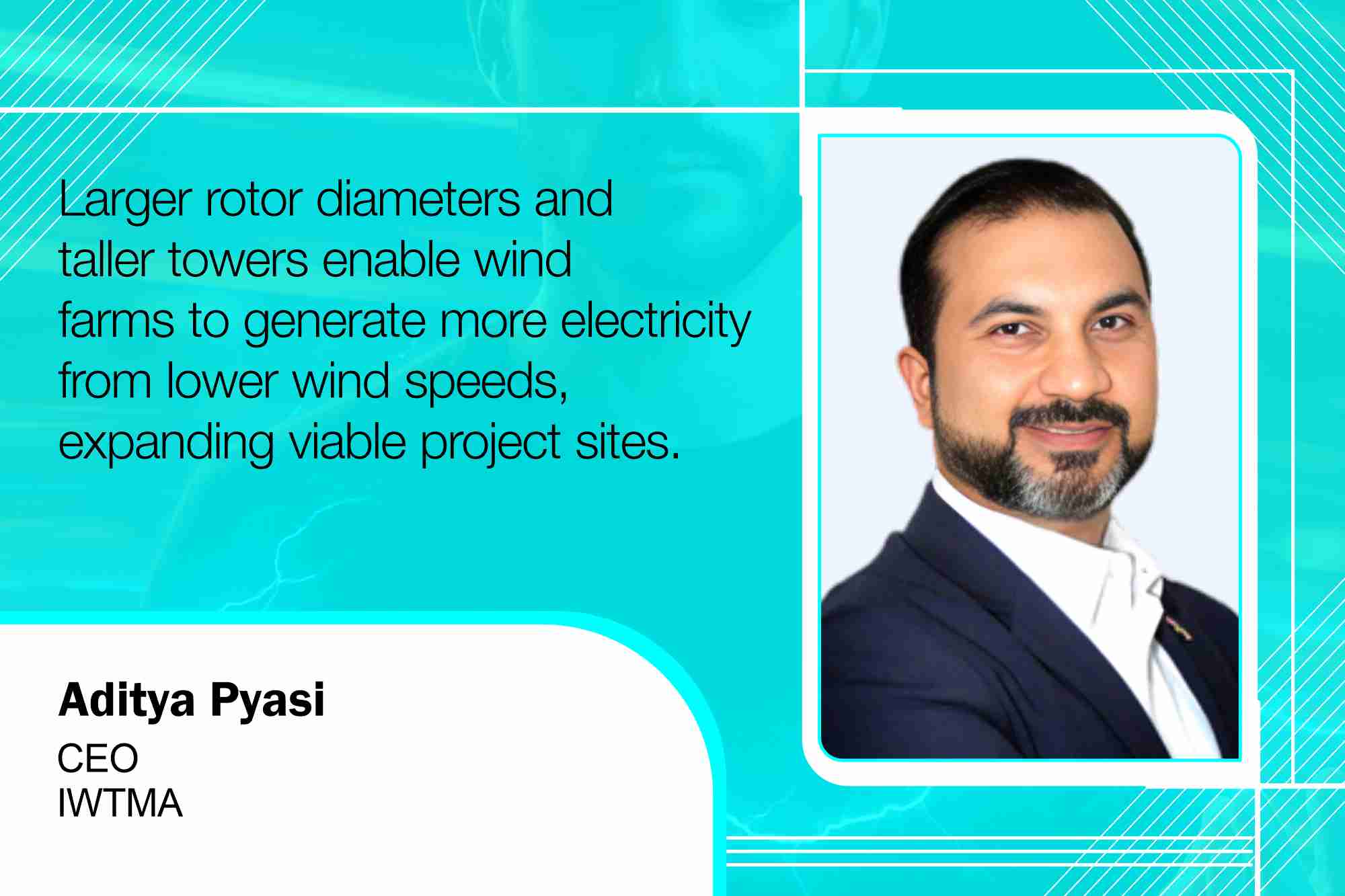Wind Power is essential for sustainable electricity production
By Staff Report June 3, 2025 2:44 pm IST
By Staff Report June 3, 2025 2:44 pm IST

Continued investment in Transmission and Distribution (T&D) networks and the availability of evacuation corridors is needed to handle the increased renewable capacity and ensure reliable delivery to consumers.
The Indian wind industry offers vast opportunities due to abundant wind resources, government incentives, and growing energy demand. However, challenges include land acquisition issues, grid integration constraints, policy uncertainties, and financing hurdles. Technological advancements and streamlined regulations can unlock the sector’s full potential and support the shift to renewable energy.
Wind Energy Capacity
Wind energy additions saw a 27.9% increase (to 4,151 MW), while solar surged by 58.5% (to 23,823 MW). The key factors contributing to the growth in wind energy capacity additions are:
Policy Support: The government’s Renewable Purchase Obligations (RPOs) and fiscal incentives, such as waivers on ISTS charges, have incentivised investment. Robust private sector participation and growing investor confidence have accelerated project deployment.
Technological Advancements: Larger rotor diameters and taller towers enable wind farms to generate more electricity from lower wind speeds, expanding viable project sites. Also, integrating wind with solar and storage improves project economics and grid stability, making wind more attractive.
Mandating Storage in New Projects: This ensures steady supply and addresses intermittency. For example, the Ministry of Power now requires new solar projects to include co-located storage, and storage will play an important role in flattening the load curve with both Wind and Solar (which are VRE). Further, continued investment in transmission and distribution (T&D) networks and the availability of evacuation corridors are needed to increase renewable capacity and ensure reliable delivery to consumers.
Safety Protocols and Maintenance Practices
In the wind industry, maintenance schedules are now based on manufacturer recommendations, operational data and industry standards incorporating preventive, predictive and corrective tasks.
Sustainability and safety are gaining prominence in all discussions across the industry. Maintenance personnel receive regular training and certification to ensure safe and effective operations. Ongoing training keeps teams updated on emerging technologies and best practices. Strict adherence to safety protocols and regulatory requirements is enforced. Risk assessments and safety measures are standard, protecting both staff and assets.
Hybrid Systems
Wind-solar hybrid systems achieve a capacity utilisation factor (CUF) of 40–50 percent, even higher with energy storage, improving grid stability and resilience. Hybrid systems and energy storage provide a more consistent electricity supply, reducing reliance on fossil fuels and minimising power outages.The role of AI and IoT is important in real-time monitoring. IoT sensors collect data on turbine output, blade stress and environmental conditions, enabling early detection of inefficiencies and performance trends. AI can analyse sensor data to predict equipment failures and optimise maintenance schedules, thus reducing downtime and operational costs. The deployment of AI/IoT needs to be pushed along with the indigenisation of technology to ensure greater cyber security, which is gaining prominence daily.
Key Challenges
Certain challenges in the sector need to be resolved for better wind power generation performance.
Transmission Infrastructure: Insufficient T&D infrastructure hinders reliable delivery of wind-generated electricity.
Land Availability and Acquisition: Large land requirements for wind farms are a challenge, but they can be sorted with the active participation of state governments in digitising records and the involvement of the district administration in a positive manner.
Intermittency and Grid Integration: Variability in wind patterns and the need for flexible grid solutions pose operational challenges.
Cyber Security: With increasing digitisation, robust cyber security measures are essential to protect wind energy infrastructure from cyber threats.
Public and private participation is necessary for the smooth wind power generation. The Revised List of Models & Manufacturers (RLMM) guidelines released by the Ministry of New and Renewable Energy (MNRE) recently is a step in the right direction, but much more needs to be done.
We use cookies to personalize your experience. By continuing to visit this website you agree to our Terms & Conditions, Privacy Policy and Cookie Policy.